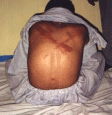


Recommendations
Background
Table of Contents
Acknowledgments
About Human Rights Watch
The Kashmir valley, which includes all of the major towns and villages along the Jhelum river to the north of Srinagar to Handwara and south to Anantnag, has been at the center of the insurgency since 1989. It is predominantly Muslim and Kashmiri-speaking. Most of the major militant groups have political representation through the All-Parties Hurriyat Conference, based in Srinagar. Many of the groups continue to command popular support in Srinagar and throughout the valley. However, their military capabilities have been severely undermined by the Indian government's use of countermilitant militias made up of former guerrillas who have infiltrated the militant groups and have assassinated and informed on their former colleagues. As a result, military engagements between militant and Indian government forces generally take place in more remote areas outside of the towns and villages of the valley, and the groups' presence in the urban areas has been reduced.
Prominent militant leaders taken into custody were among those executed. In an incident that sparked protests throughout Kashmir, on April 20, 1998, security forces from the Special Operations Group (SOG), a police counterinsurgency unit, detained S. Hamid, chairman of one of the factions of the Jammu and Kashmir People'sLeague. The next day the authorities claimed he had been killed in a shootout. Relatives who witnessed the arrest, however, stated that he was dragged out to the porch of his house and shot.28
Many detentions carried out by Indian security forces in Kashmir occur after "crackdowns"-cordon-and-search operations during which all the men of a neighborhood or village are called to assemble for an identification parade in front of hooded informers. Those whom the informers point out are taken away for torture and interrogation, and some are simply taken away and shot. In those cases, officials in Kashmir routinely claim that the detainee was killed in an "encounter" with the security forces, or was shot trying to escape.29
28 South Asia Human Rights Documentation Centre (New Delhi), Report on Jammu and Kashmir-June 1997 to June 1998, p. 10. 29 So-called "encounter killings" have been well-documented by human rights groups throughout India. See, for example, People's Union for Civil Liberties, "Murder by Encounter," in A. R. Desai, ed., Violations of Democratic Rights in India (Bombay: Popular Prakashan, 1986) p. 457. In Punjab, thousands of suspected Sikh militants have been summarily executed in alleged "encounters." See Human Rights Watch/Asia (now the Asia Division of Human Rights Watch) Dead Silence: The Legacy of Human Rights Abuses in Punjab (New York: Human Rights Watch, 1994).
Focus on Human Rights
India: Human Rights Abuses Fuel Conflict
India's Secret Army in Kashmir
New Patterns of Abuse Emerge in the Conflict
HRW, May 1996
India: Arms and Abuses in Indian Punjab and Kashmir
HRW, Sept. 1994